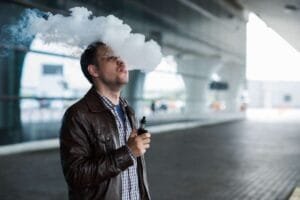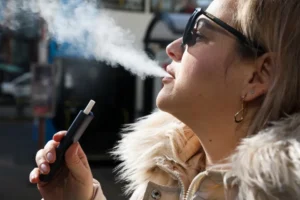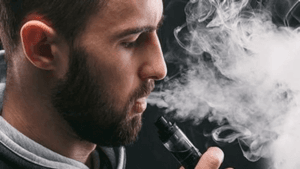As Vape use grows more popular, more countries and regions are concerned about its public health impact. In the meantime, Vape use in public places has sparked wide discussion and policy-making, focusing on ensuring public health and safety.
Dangers and Potential Risks of Vape

- Many believe Vape are safer than cigarettes, but studies show that in the long run, their nicotine, flavorings, and chemicals still harm human health.
- Vape vapor can damage the lungs, heart, and immune system, posing greater risks to children, teens, and pregnant women.
- Additionally, the safety of second-hand vapor from Vape remains unclear, raising concerns in the context of Vape use in shared spaces.
Why is there a need to restrict Vape use in the public places?
- While the vapor from vaping is less intense than traditional cigarette smoke, it can still pose health risks to those nearby, especially in the enclosed spaces.
- Moreover, in the case of secondhand vapor, it is not entirely harmless. It may contain harmful chemicals, including propylene glycol, glycerin, and certain toxic substances.
- One key attraction of Vape is its wide range of flavors. These flavors can make Vape more appealing, particularly to younger individuals.
- Regulating Vape use in public places can help limit minors’ exposure to Vape, reducing its influence on younger individuals.
- Even without immediate health risks, in the Vape use can impact air quality and the comfort of others in public spaces.
- Many public places enforce no-smoking policies to keep the environment clean, protecting everyone from smoke. In the same way, these rules should also apply to Vape.
Current Regulations in the Vape Use Landscape
- Many places have included vaping within the scope of their anti-smoking laws. As a result, vaping is now banned in indoor spaces such as restaurants, shopping malls, and offices.
- The purpose of these regulations is twofold. First, they aim to reduce exposure to second-hand vapor. In the second place, they seek to ensure a clean and healthy indoor environment for everyone. indoor environment for everyone.
- In some countries, Vape is also required to be sold only through specific channels in the market.
- Additionally, limit advertising in the public media, especially targeted at youth.
- Some jurisdictions require Vape products to be labeled with potential health risks.
- Also required are age restrictions in the sale and use of these products.
- Establishing designated areas for Vape use in open spaces, such as dedicated smoking zones, helps prevent second-hand vapor from affecting non-smokers.
- This approach meets the needs of vape users, while in the same time protecting the health and safety of non-users.
The use of vapes in public spaces involves balancing personal freedom with public health and social responsibility. Therefore, in the context of public safety and health, reasonable and regulated use is crucial to protect both while respecting individual choices.











